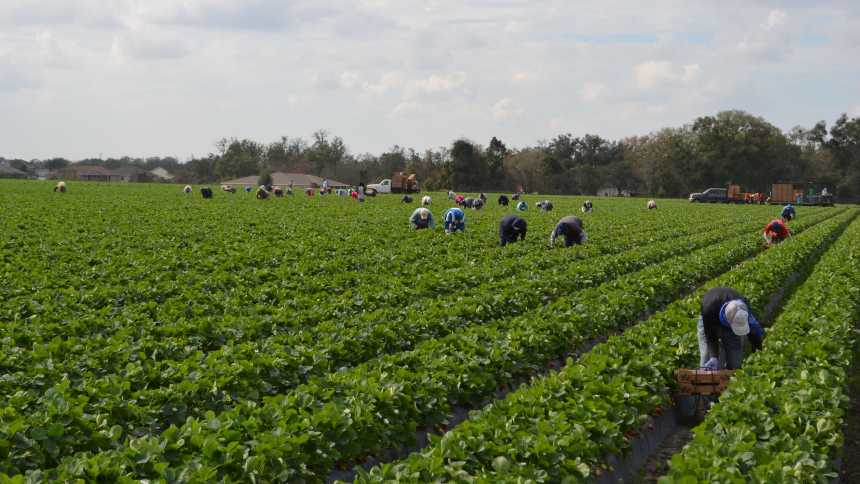Transcending Farm Labor Crisis No Easy Task [Opinion]

Growers want equipment developed that will ease the number of workers harvesting crops. Thankfully, progress is being made on that front. Photo by Frank Giles
Needless to say, unfair trade practices are a big deal impacting Florida farming operations and profitability. Labor shortages are just as big a deal, if not bigger. Just as I was writing this column, the Washington Post ran a story titled: “North Carolina needed 6,500 Farm Workers. Only 7 Americans Stuck it Out.”
The story featured a study on how the farming industry there uses agriculture labor and the H-2A guestworker program. The story featured the provision in H-2A, that before any foreign workers can be recruited, local workers must be offered the farm jobs. According to the article, the willingness of local labor to do these jobs was “basically nonexistent.”
In 2011, when unemployment in the state was 10.51% and 6,500 farmworkers were needed, only 163 native born workers started the season. Only seven people finished the season. Nearly all the needed workers had to come from non-native labor sources like H-2A.
While the story noted those behind the study and the debate had vested interest in its outcome, it pointed out: “It seems clear that it would take a quite large increase in agricultural wages to get native workers to do these jobs, an increase that could well put the farms in question out of business.”
I know this is not news to you, but it is satisfying to see urban, mainstream media like the Washington Post at least acknowledge the problem. So, it is clear we have problems: a zero chance of sourcing local labor without wages that would bankrupt the farm — and I am not convinced the labor would come and stick it out even then. And, we have guestworker program that is expensive and weighed down by red tape.
But, technology could be on cusp of fixing these problems for growers of crops that are traditionally hand harvested. Gary Wishnatzki, Owner and CEO of Wish Farms in Plant City, FL, recently testified before the U.S. House Committee on Agriculture about the labor situation and future fixes.
In his testimony, Wishnatzki cited a study by UF/IFAS that estimated labor costs in strawberry production at $8,432 per acre compared to $3,842 per acre for Mexican growers. But, Wishnatzki noted the study was from a five-year period ending two years ago.
“Our farm’s labor costs this past season were more than $13,000 per acre,” he noted. “Our farm’s labor costs are not dissimilar to other producers in Florida.”
In California, labor costs are rising at an even higher rate with some farms paying paying piece rates that convert to $35 per hour. It amounts to an unsustainable situation.
For this very reason, Wishnatzki has co-founded Harvest CROO Robotics, which has invented a strawberry harvesting robot. It is a collaboration with eight other strawberry companies based in Florida and California who see the writing on the wall and realize the labor shortage problem will not be fixed and technology is the best avenue forward.
And, the robot is pretty cool. The machine will carry 16 picking units and will span six beds of plants, picking the four middle beds. According to the company’s website (HarvestCrooRobotics.com), it is expected one machine will pick 8 acres in one day and replace 30 pickers.
Wishnatzki urged Congress to implement tools in the next farm bill that would foster technology like his strawberry picking robot.
“The bottom line: Innovation will be the key to maintaining our nation’s ability to feed itself and this committee should fight for investments in technology and research for the specialty crop sector,” he noted. “Please consider that automation is a long-range solution, and we still depend on foreign workers to bridge the gap.










